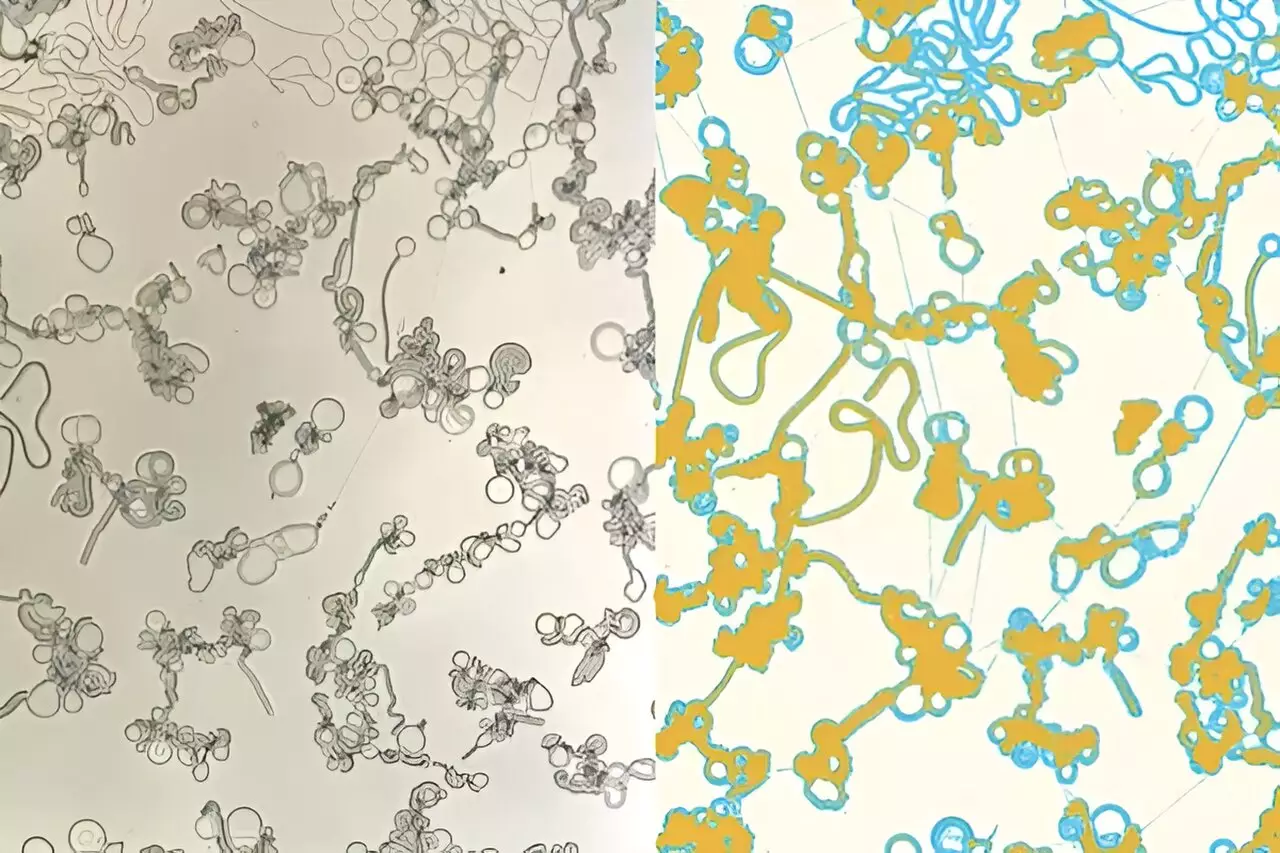Liquid crystals (LCs) are an essential component in a myriad of technologies, encapsulating characteristics that make them indispensable in modern display technologies and several other applications. They endure in our smartphones, televisions, and even essential medical apparatus, yet their secrets transcend mere display applications. Researchers at the forefront of chemical engineering, particularly in Chinedum Osuji’s laboratory, have unraveled a new dimension to liquid crystals: their ability to self-assemble into intricate structures that mimic biological systems. This groundbreaking discovery could propel advancements in material science and biotechnology.
Liquid crystals possess unique properties; they combine features of both liquids and solids, enabling them to respond dynamically to external stimuli, such as electric fields. Specifically, liquid crystals can rearrange their molecular structure to reflect various wavelengths of light, a characteristic that forms the basis of liquid crystal displays (LCDs). While conventional wisdom sees LCs primarily as enabling technologies for screens, the nascent insights from Osuji’s team suggest a more profound potential.
During their investigations, researchers observed that liquid crystals could condense into unexpected configurations, including filaments and flattened disks. These formations possess a remarkable ability to transport material, evoking comparisons to biological systems which exhibit similar transport capabilities. This revelation reshapes our understanding of LCs, suggesting they could play a role in the development of self-assembling materials reminiscent of living organisms.
The discovery unfolded in an interdisciplinary context, where physicists, chemists, and biologists collaborated to explore the condensation phenomena in various substances. Initially collaborating with ExxonMobil, Osuji’s team was probing mesophase pitch—an important precursor for high-strength carbon fibers—when their exploration took an unexpected turn. It was within the fabric of experimental chaos that Yuma Morimitsu, a postdoctoral fellow, uncovered the astonishing behavior of LCs when subjected to particular heating and cooling protocols.
Rather than participating in the typical demixing behavior common among immiscible fluids—like oil and water—the liquid crystals exhibited a unique phase separation that led to the emergence of complex structures. This unorthodox behavior emphasized how further scrutiny can frequently reveal phenomena obscured by standard assumptions and methodologies.
Please Stand By: A Closer Look at Formation
Through high-resolution microscopy, researchers closely monitored the behavior and formation of the previously noted structures. They had to alter their experimental conditions to amplify the visibility of these peculiar structures. What emerged was that the liquid crystals, instead of forming simple droplets when separating from a carrier fluid like squalane, clustered into filaments that interconnected and evolved into bulged disks. These dynamic arrangements appeared not only novel but also strikingly analogous to biological transport mechanisms found in living cells.
The revelation that liquid crystals can spontaneously form organized structures opens the door to exploring self-assemblage on a micro-scale. For scientists like Christopher Browne, the implications of this finding are profound. It bridges the often-disparate worlds of active matter—itself a burgeoning field focused on the dynamics of materials that move and transport internally—and traditional studies of self-assembly.
Pioneering Horizons in Research & Applications
The research presents a unique intersection of disciplines, suggesting pathways toward synthetic systems that emulate biological behavior, potentially enabling breakthroughs in biotechnology and material science. The active matter observed hints at a newfound capability to engineer materials that self-organize, which could have far-reaching consequences in pharmaceuticals, sustainable technologies, and smart materials.
For instance, should these droplet-like formations behave as micro-reactors, facilitating interactions and reactions between transported molecules, they may not only enhance material utility but also contribute to more efficient chemical processes. The potential of manipulating such systems stands to revolutionize how we approach environmental challenges and manufacturing protocols.
While liquid crystals have been integral to industry, their fundamental study has been eclipsed by commercial application. Browne aptly points out that as fields become industrialized, the drive for foundational research may dwindle. The newfound insights from Osuji’s lab necessitate a resurgence of interest in studying liquid crystals from a basic science perspective to unlock their multifaceted properties.
The ongoing breakthroughs promise not merely technological advancements but also a shift in how we understand complex systems—both man-made and natural. As scientists continue to probe the dimensions of liquid crystals, we may find ourselves standing at the precipice of innovations that could transcend current applications and inspire the next generation of materials that blur the lines between biology and technology.

